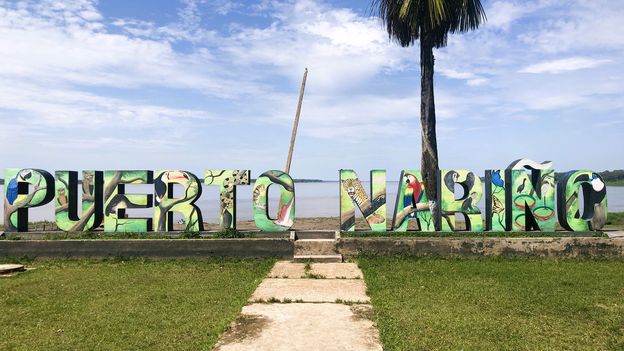After paying a COP$15,000 (£3) entry tax that goes towards town maintenance, I got acquainted with the community on an exploratory walkabout. It wasn’t a typical Amazonian village of muddy paths and unkempt foliage. Manicured grass-fronted stores selling colourful crafts, and a striking selection of surrealistic statues depicted the local wildlife (turtles, pink dolphins and parrots all featured). A boisterous game of five-a-side football was taking place under a large metal canopy by the river and community members with wheelbarrows and brooms were busily sweeping the pathways.
Founded in 1961, Puerto Nariño drew most of its population from Indigenous people who had been living in the region for centuries in separate family malocas (longhouses). It didn’t take long to lure adventurous travellers.
“Starting in the 1980s and ’90s, the town began to attract small groups of tourists, who stayed in wooden hotels with basic services,” said Luz Jenny Torres, leader of sustainable tourism in the municipality. “Then at the beginning of the 2000s we started to see a more regular flow of tourists – family groups and university students. In 2004, the then-mayor Edilberto Suárez Pinto began to implement a vision for sustainability working hard to beautify the urban area, strengthen tourism in Indigenous communities and manage the tourist infrastructure.”
In 2007, Torres proposed to the mayor that the municipality act as a pilot model for sustainable tourism countrywide. A plan was hatched, and Puerto Nariño became a poster child for green, grassroots tourism in a country still rejuvenating after years of conflict.
“There are five environmental programmes that are constantly monitored,” explained Torres of the current setup. “Management of water, energy, solid waste and pollution; along with the protection and conservation of flora and fauna.” For residents and travellers, this means showering with recycled rainwater, strolling streets unsullied by litter and enjoying close-up encounters with wildlife, from monkeys to eagles.










